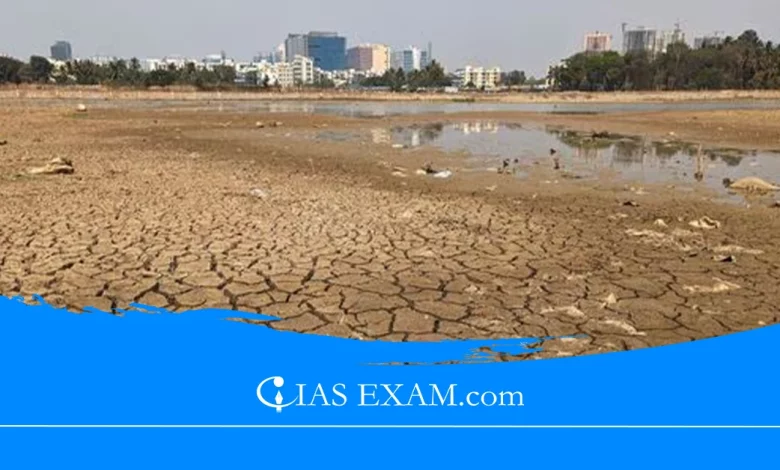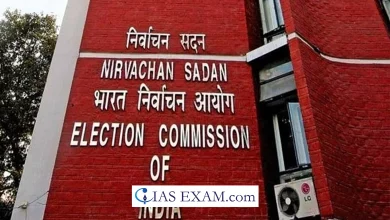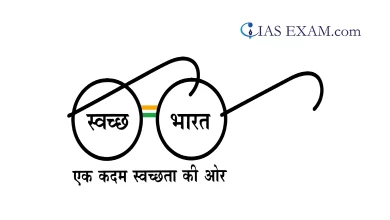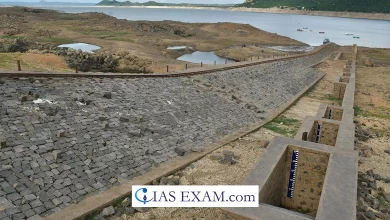Water Crisis in Bengaluru and its Implications for India
GS Paper 3 - Environmental Pollution & Degradation

Context
Bengaluru, the burgeoning IT hub of India, is grappling with a severe water crisis that has rippling consequences not just for the city but also for the broader national context. Recent reports indicate that 223 out of the 236 taluks in Karnataka are reeling under the impact of drought, affecting critical water sources for Bengaluru, such as Mandya and Mysore districts.As the summer intensifies in the coming months, about 7000 villages in the state of Karnataka are at the risk of witnessing acute drinking water crisis.
Reasons behind Water Scarcity in Bengaluru
- Reduced Rainfall and Empty Water Reservoirs: The city has witnessed insufficient rainfall in the past couple of monsoons. This has significantly impacted the Cauvery River, a primary source of water for the city. Lower river levels mean less water for drinking and agriculture.
- Depletion of Groundwater Sources: Bengaluru’s explosive growth has resulted in the concretisation of natural landscapes that used to absorb rainwater. This reduces groundwater recharge and increases surface runoff, leading to less water percolation.
- Inadequate Infrastructure: The city’s infrastructure, including water supply systems and sewage networks, has not kept pace with its rapid growth. This inadequacy exacerbates the challenges of distributing water efficiently to meet the demands of the expanding population.
- Climate Change: Changing weather patterns, including erratic rainfall and prolonged droughts, attributed to climate change, have reduced the availability of water in Bengaluru’s reservoirs and natural water bodies.
- Pollution of Water Bodies: Pollution from industrial discharge, untreated sewage, and solid waste dumping has contaminated water sources, rendering them unfit for consumption and further reducing the available water supply.
- Legal and Political Challenges: Disputes over water sharing between Karnataka and neighbouring states, particularly with regard to rivers like the Cauvery, further complicate efforts to manage and secure water resources for Bengaluru’s residents.
Groundwater Crisis in India
- India is the largest groundwater user in the world, with an estimated usage of 251 bcm per year which is a quarter more than the global total. India’s 60% of irrigated agriculture 85% drinking water supplies are dependent on groundwater.
- The NITI Aayog report mentioned that India was placed at the rank of 120 amongst 122 countries in the water quality index, with nearly 70% of water being contaminated.
- Millions of Indians lack access to safe drinking water and improved sanitation, leading to a high incidence of waterborne diseases.
- The water crisis in India is compounded by a growing demand for clean water, particularly from a fast-growing middle class, and widespread practices of open defecation, leading to health-related concerns.
- India’s groundwater crisis is exacerbated by policy gaps, regulatory failures, and institutional inertia. The lack of comprehensive groundwater legislation and enforcement mechanisms perpetuates unsustainable extraction practices, exacerbating the crisis.
Steps to be taken to Address the Issues
- Interlinking of Rivers: The national interlinking of rivers (ILR) is the idea that rivers should be inter-connected, so that water from the surplus rivers and regions could be transferred to deficient regions and rivers to address the issue of water scarcity.
- Promote Water Conservation: Implementing water conservation measures at individual, community, and national levels is crucial.
- Invest in Infrastructure: Allocate adequate financial resources for water infrastructure development, maintenance, and rehabilitation.
- Promote Sustainable Agriculture: Encourage farmers to adopt water-efficient farming practices such as drip irrigation, precision agriculture, crop rotation, and agroforestry. Providing incentives and subsidies for implementing water-saving technologies can facilitate this transition.
- Address Pollution: Combat water pollution by enforcing strict regulations on industrial discharge, sewage treatment, and agricultural runoff.
- Legislation and Governance: Strengthen water governance frameworks by enacting and enforcing water-related legislation, policies, and regulatory mechanisms.
- Adopt One Water Approach: One Water Approach, also referred to as Integrated Water Resources Management (IWRM), is the recognition that all water has value, regardless of its source. It includes managing that source in an integrated, inclusive and sustainable manner by including the community, business leaders, industries, farmers, conservationists, policymakers, academics and others for ecological and economic benefits.
| Government Schemes for Groundwater Crisis in India
|
Way Forward
Addressing India’s Groundwater Crisis will require a multifaceted approach encompassing policy reform, technological innovation, community engagement and behavioral change. The Crisis represents a formidable challenge that demands urgent attention and concerted action.
As the backbone of agriculture and a lifeline for millions, sustainable groundwater management is indispensable for India’s future prosperity and resilience. By embracing innovative solutions, fostering collaboration across stakeholders, and prioritizing long-term sustainability over short-term gains, India can navigate the depths of its groundwater crisis and emerge with a more secure and resilient water future.
SOURCE: Times of India





.png)



